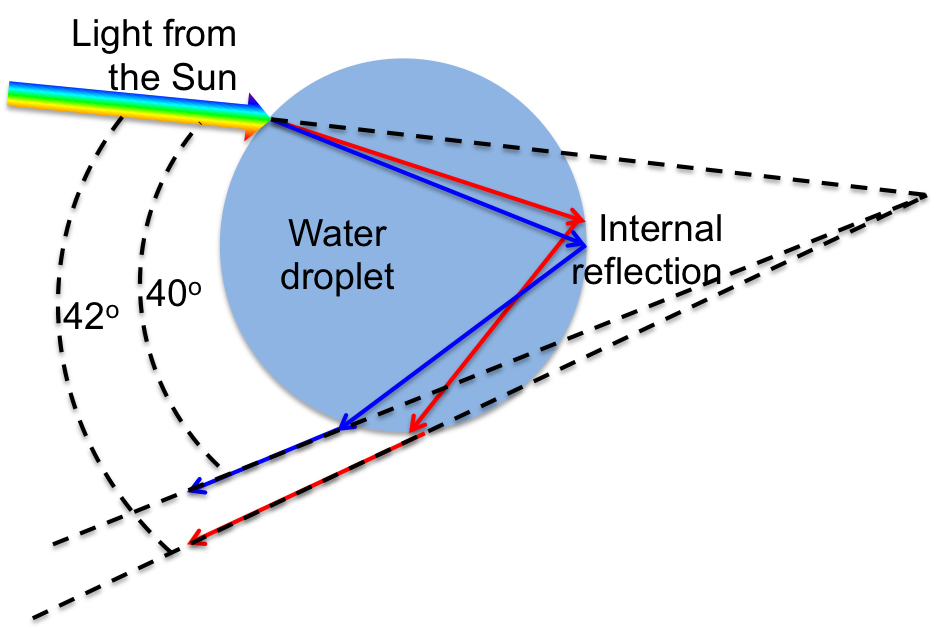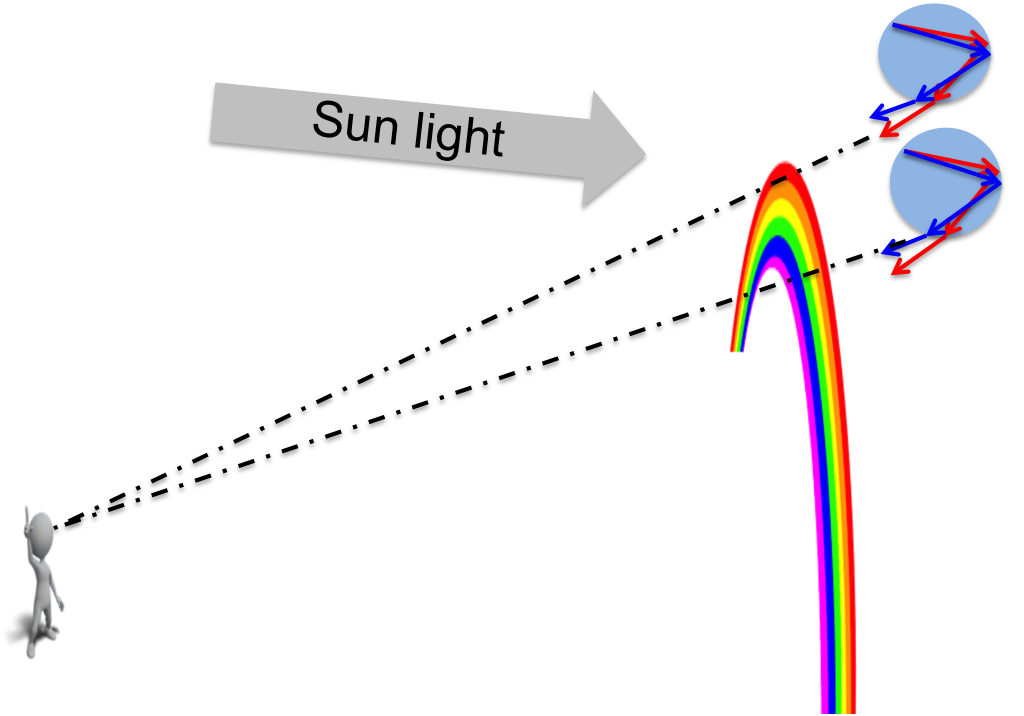Mother nature has provided us with many splendid masterpieces, one of which is the colorful rainbow. However, have you ever wonder how are rainbows created? Why do them usually appear after rainfalls?
 It all starts with sunlight, which actually comprises of electromagnetic waves of various wavelengths. It is the frequency that determines the color of the electromagnetic wave that our eyes are exposed to. When light travels from one material to another, at the interface, reflection and refraction occurs. However, refraction angle depends on the frequency of the light. As shown in the left drawing, when sunlight enters a water droplet from air, high frequency wave is bent more than low frequency ones. The angle of deviation between the incoming light rays from the sun and the refracted rays directed to the observer’s eyes is approximately 42 degrees for the red light. Because of the tendency of shorter wavelength blue light to refract more than red light, its angle of deviation from the original sun rays is approximately 40 degrees.
It all starts with sunlight, which actually comprises of electromagnetic waves of various wavelengths. It is the frequency that determines the color of the electromagnetic wave that our eyes are exposed to. When light travels from one material to another, at the interface, reflection and refraction occurs. However, refraction angle depends on the frequency of the light. As shown in the left drawing, when sunlight enters a water droplet from air, high frequency wave is bent more than low frequency ones. The angle of deviation between the incoming light rays from the sun and the refracted rays directed to the observer’s eyes is approximately 42 degrees for the red light. Because of the tendency of shorter wavelength blue light to refract more than red light, its angle of deviation from the original sun rays is approximately 40 degrees.
 After raining, there are many water droplets suspended in midair. When conditions are right, a person on the ground sees the light coming out of these droplets, usually forming a half-circle with red being the color perceived on the outside or top of the bow. This can be understood based on the earlier discussion. For the same water droplet, the red light is refracted out at a steeper angle towards the ground than the blue light. Thus, when a person looks up at a steeper angle with respect to the ground, water droplets within this line of sight are refracting the red light to the person’s eyes. The blue light from these same droplets is directed at a less steep angle, thus passes over the persons’ head. On the other hand, at a less steep angle, water droplets within this line of sight are directing blue light to the person’s eyes while the red light is directed downwards at a steeper angle towards the person’s feet.
After raining, there are many water droplets suspended in midair. When conditions are right, a person on the ground sees the light coming out of these droplets, usually forming a half-circle with red being the color perceived on the outside or top of the bow. This can be understood based on the earlier discussion. For the same water droplet, the red light is refracted out at a steeper angle towards the ground than the blue light. Thus, when a person looks up at a steeper angle with respect to the ground, water droplets within this line of sight are refracting the red light to the person’s eyes. The blue light from these same droplets is directed at a less steep angle, thus passes over the persons’ head. On the other hand, at a less steep angle, water droplets within this line of sight are directing blue light to the person’s eyes while the red light is directed downwards at a steeper angle towards the person’s feet.
Apparently, all that we need for rainbows to form are sunlight, suspended water droplets and the proper angle of sighting. They are certainly not limited to the dispersion of light by raindrops. Even a backyard water sprinkler is capable of producing a rainbow.
